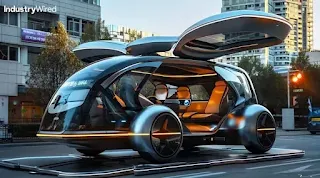The Future of Electric Vehicles: Challenges and Innovations
Electric Vehicles (EVs) are quickly becoming the cornerstone of the future of transportation. With growing concerns over climate change and the push for cleaner, more sustainable energy solutions, EVs are leading the way. However, while the adoption of electric cars is rising, many challenges still need to be addressed. This article explores the hurdles and innovations that will shape the future of EVs.
What are Electric Vehicles (EVs)?
Electric Vehicles (EVs) are cars that are powered by electricity rather than gasoline or diesel. They use electric motors and batteries to operate, offering an alternative to the internal combustion engines that have been the standard for over a century.
Key Challenges Facing Electric Vehicles
Electric Vehicles may be a step toward a more sustainable future, but they face several challenges in their widespread adoption.
1. Battery Technology and Range Anxiety
Challenge:
One of the major concerns with EVs is battery technology. Current lithium-ion batteries still have limitations regarding their range and charging time. Range anxiety — the fear of running out of power before reaching a charging station — continues to be a barrier for potential EV buyers.
Solution:
Manufacturers are focusing on developing next-generation batteries, like solid-state batteries, which could offer higher energy densities, faster charging times, and longer lifespans. These innovations promise to alleviate range anxiety and make EVs even more convenient.
2. Charging Infrastructure
Challenge:
While the number of EV charging stations is increasing, there still aren't enough fast-charging stations in many areas. Inadequate infrastructure can create inconvenience for EV owners, especially in rural or less-developed regions.
Solution:
To tackle this challenge, governments and private companies are ramping up investments to install more public charging stations. For instance, Tesla’s Supercharger network is a notable example of how companies are addressing this gap. Additionally, there are innovations like wireless charging that can improve convenience and reduce the dependency on fixed charging stations.
3. Cost and Affordability
Challenge:
EVs, while becoming more affordable over time, still generally cost more upfront than traditional gasoline-powered vehicles. This can deter many potential buyers, especially in emerging markets where affordability is a key concern.
Solution:
The cost of EVs is expected to decrease as battery production becomes more efficient and widespread. Economies of scale will help bring prices down, making EVs accessible to a larger demographic. Governments are also introducing tax rebates and subsidies to encourage EV adoption.
4. Environmental Impact of Battery Production
Challenge:
Though EVs themselves are environmentally friendly, the production of their batteries can be quite harmful to the environment. The extraction of materials like lithium, cobalt, and nickel, used in batteries, can lead to significant environmental degradation.
Solution:
Companies are working on improving battery recycling processes and finding more sustainable materials for batteries. Innovations such as solid-state batteries could also reduce environmental impact, as they require fewer rare materials.
Innovations Driving the Future of Electric Vehicles
Despite the challenges, several key innovations are accelerating the development of Electric Vehicles and could shape the future of transportation.
1. Autonomous Driving and EV Integration
Innovation:
Self-driving technology is another exciting frontier for EVs. Since electric vehicles already have fewer moving parts than traditional vehicles, they are a great fit for autonomous driving systems.
Future Potential:
The combination of autonomous driving and electric vehicles could revolutionize transportation by reducing accidents, improving traffic flow, and making driving more efficient. In the future, we may see autonomous electric ride-sharing fleets, reducing the number of cars on the road and lowering overall emissions.
2. Vehicle-to-Grid (V2G) Technology
Innovation:
Vehicle-to-Grid (V2G) is a technology that allows EVs to send electricity back to the grid, essentially turning your car into a mobile energy storage unit.
Future Potential:
This innovation could transform EVs into a critical part of the energy infrastructure, especially as renewable energy sources like solar and wind power become more common. By using V2G technology, owners could even sell excess energy back to the grid, helping to reduce their energy costs.
3. Wireless EV Charging
Innovation:
Wireless charging is set to make charging EVs much more convenient. Rather than plugging in a physical cable, magnetic induction technology allows cars to charge by simply parking over a charging pad.
Future Potential:
Wireless charging could be implemented in homes, workplaces, and even roads, where EVs could charge while in motion. This could eliminate charging downtime, making the process seamless and efficient for EV owners.
What is the Road Ahead for Electric Vehicles?
As the demand for sustainable transportation continues to grow, the role of Electric Vehicles (EVs) will only become more important. While there are several challenges to overcome, the innovations on the horizon make the future of EVs incredibly exciting.
Overcoming Challenges: A Collaborative Effort
The success of Electric Vehicles depends not only on car manufacturers but also on government policies, infrastructure developers, and consumers. Investments in charging networks, battery technologies, and sustainable energy sources will play a huge role in overcoming these challenges.
The Promise of a Greener Future
As technological advancements continue, the future of Electric Vehicles looks bright. We can expect a future where EVs are more affordable, more efficient, and integrated into a cleaner, smarter energy grid. With zero-emissions and innovative features, EVs represent a crucial part of achieving a sustainable future.
















0 Comments
Show word verification for readers who comment